On the occasion of World Museum Day, we look at renowned museums from around the world that feature amazing historical works and exhibits and attract millions of visitors


The Louvre Museum
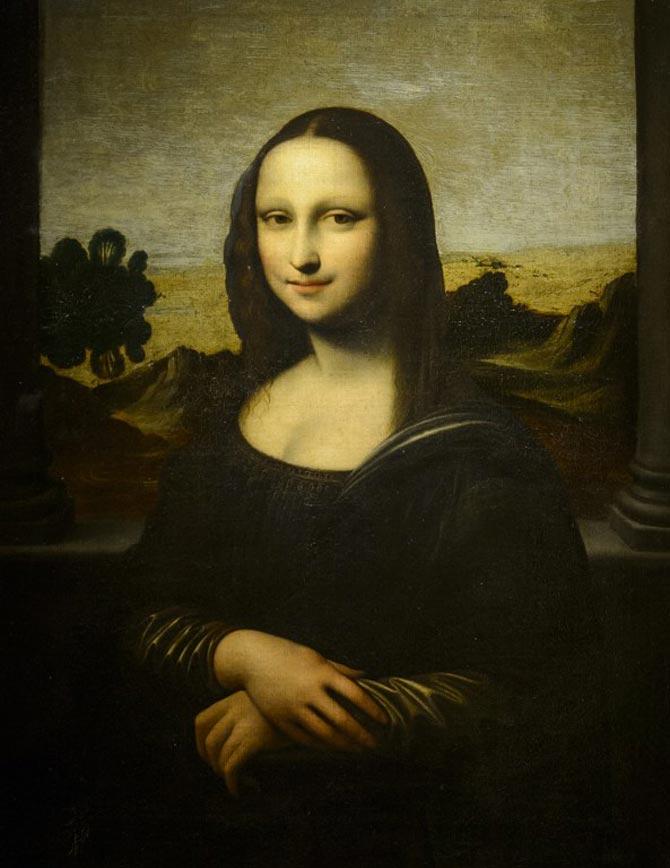
The Mona Lisa. Pic/AFP
The Louvre: Also known as the Louvre Museum and the Musée du Louvre in French, it is considered the the world's largest museum and a historic monument in Paris, France. Housed in the Louvre Palace, originally built as a fortress in the late 12th century under Philip II, It is the world’s most-attended museum as of 2015. Opened on 10 August 1793 with an exhibition of 537 paintings, the majority of the works being royal and confiscated church property. Because of structural problems with the building, the Louvre was closed in 1796 until 1801. The Louvre's collections are divided among eight curatorial departments: Egyptian Antiquities; Near Eastern Antiquities; Greek, Etruscan and Roman Antiquities; Islamic Art; Sculpture; Decorative Arts; Paintings; Prints and Drawings. Leonardo da Vinci's Mona Lisa is the Louvre's most popular attraction.
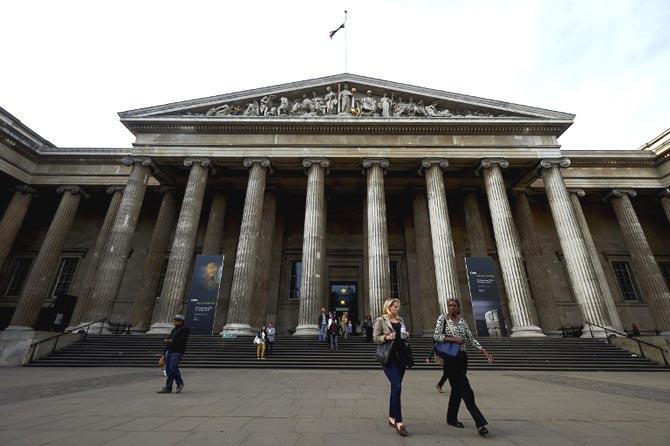
The main entrance of the British Museum in central London. AFP PHOTO
British Museum: Located in the Bloomsbury area of London, the British Museum is among the largest and most comprehensive in existence with a permanent collection of over 8 million works. Established in 1753, the museum first opened to the public on 15 January 1759, in Montagu House in Bloomsbury. It was largely based on the collections of the physician and scientist Sir Hans Sloane. Some objects in the British Museum's collection, most notably the Elgin Marbles from the Parthenon, have caused controversy and calls for restitution to their countries of origin. The museum's expansion over the following two and a half centuries has resulted in the creation of several branch institutions, the first being the British Museum (Natural History) in South Kensington in 1881. The centre of the museum was redeveloped in 2001 to become the Great Court, surrounding the original Reading Room. The Rosetta Stone and the Sumerian Queen's Lyre are popular exhibits.
The British Museum houses the world's largest[h] and most comprehensive collection of Egyptian antiquities (with over 100,000[58] pieces) outside the Egyptian Museum in Cairo.

Grounds and entrance to the Smithsonian Institute Castle, Washington D.C.
Smithsonian Institution: Termed "the nation's attic" for its holding of 138 million items, the Smithsonian Institution chiefly located in Washington D.C. is a group of museums and research centers administered by the Government of the United States. The Institution has nineteen museums, nine research centers, and a zoo including historical and architectural landmarks, mostly in the District of Columbia. Additional facilities are located in Arizona, Maryland, Massachusetts, New York City, Virginia, and Panama. A further 170 museums are Smithsonian Affiliates. The museum has over 30 million visitors annually, who are admitted without charge. The Wright brothers' 1903 Flyer, the original Star-Spangled Banner at the National Museum of American History; the Gem Hall (including the Hope Diamond) at the National Museum of Natural History, and the Apollo 11 command module at the National Air and Space Museum are some of its main attractions.
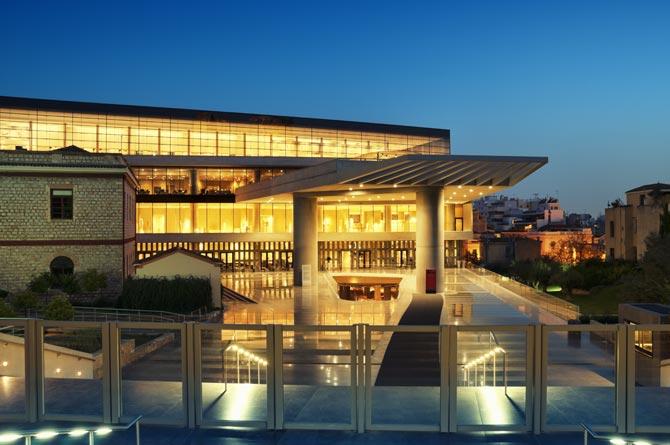
The Acropolis Museum in Athens, Greece
Acropolis Museum: The museum, which was founded in 2003 in Athens, Greece was opened to the public on 20 June 2009. The Organization of the Museum was established in 2008. Nearly 4,000 objects are exhibited at the Acropolis Museum over an area of 14,000 square metres. It is an archaeological museum focused on the findings of the archaeological site of the Acropolis of Athens and was built to house every artifact found on the rock and on its feet, from the Greek Bronze Age to Roman and Byzantine Greece. The museum also lies on the archaeological site of Makrygianni and the ruins of a part of Roman and early Byzantine Athens. The Acropolis Museum has received numerous awards and accolades over the years. During the August full moon nights, the museum remains open until late at night and welcomes visitors for free. Also the same night concerts take place on the museum's courtyard. Excavation below ground level continues. The site and process are visible through the ground level glass flooring. The site will be available for visitation once the excavation is complete. The Silver Cup designed by Michel Bréal and awarded to the Marathon Winner Spyros Louis at the first Modern Olympic Games (1896), is displayed at the Acropolis Museum and will remain to the Acropolis Museum until the completion of the Stavros Niarchos Foundation Cultural Center, where it will be permanently exhibited.
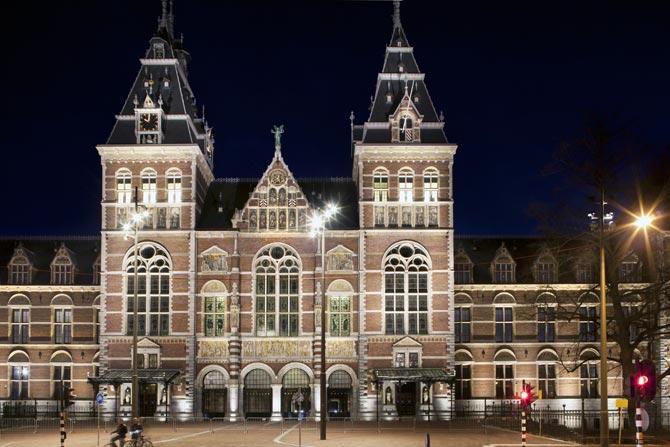
The Rijksmuseum
Rijksmuseum: Also known as the Imperial Museum, the Rijksmuseum is a Dutch national museum dedicated to arts and history in Amsterdam and has on display 8,000 objects of art and history, from their total collection of 1 million objects from the years 1200–2000, among which are some masterpieces by Rembrandt, Frans Hals, and Johannes Vermeer. The museum also has a small Asian collection which is on display in the Asian pavilion. It is also the largest art museum in the country and was the most visited museum in the Netherlands with record numbers of 2.2 million and 2.45 million visitors in 2013 and 2014. The Rijksmuseum is located at the Museum Square in the borough Amsterdam South, close to the Van Gogh Museum, the Stedelijk Museum Amsterdam, and the Concertgebouw. The museum was founded in The Hague in 1800 and moved to Amsterdam in 1808, where it was first located in the Royal Palace and later in the Trippenhuis. The current main building was designed by Pierre Cuypers and first opened its doors in 1885. On 13 April 2013, after a ten-year renovation which cost € 375 million, the main building was reopened by Queen Beatrix. Frans Hals' Portrait of a Young Couple (1622), Johannes Cornelisz Verspronck's Girl in a Blue Dress (1641) are some of its popular exhibits.
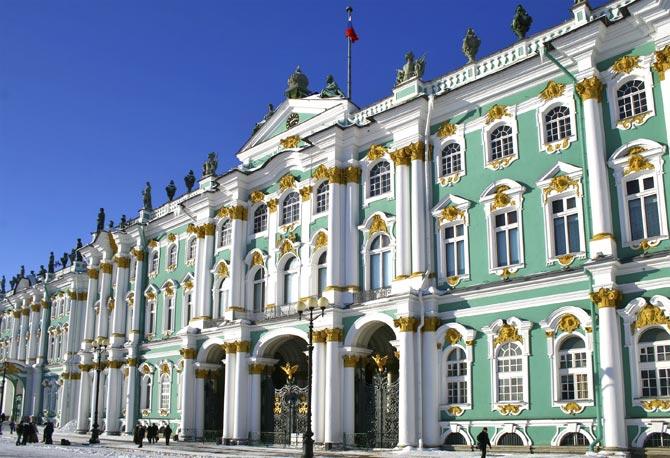
The Winter Palace during the day
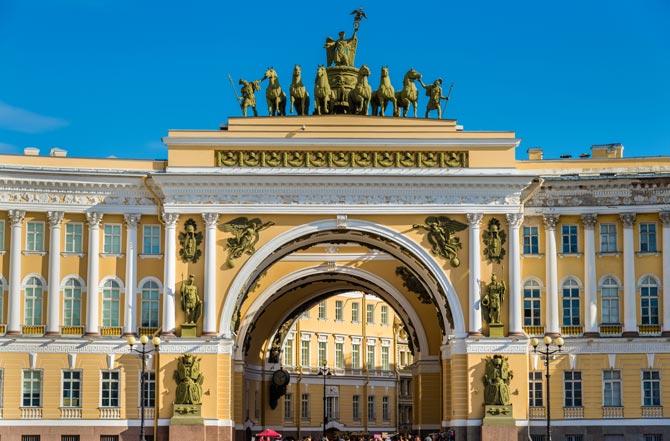
The Double Triumphal Arch, the General Staff Building
Hermitage Museum: One of the world's largest and oldest museums, the Hermitage Museum was founded in 1764 by Catherine the Great and has been open to the public since 1852. It is located in Saint Petersburg, Russia. Also called the State Hermitage, its collections, of which only a small part is on permanent display, comprise over three million items including the largest collection of paintings in the world, which occupy a large complex of six historic buildings along Palace Embankment, including the Winter Palace, a former residence of Russian emperors. Of six buildings of the main museum complex, five, named the Winter Palace, Small Hermitage, Old Hermitage, New Hermitage and Hermitage Theatre, are open to the public. Entrance is free of charge the first Thursday of every month for all visitors, and free daily for students and children. The museum is closed on Mondays.
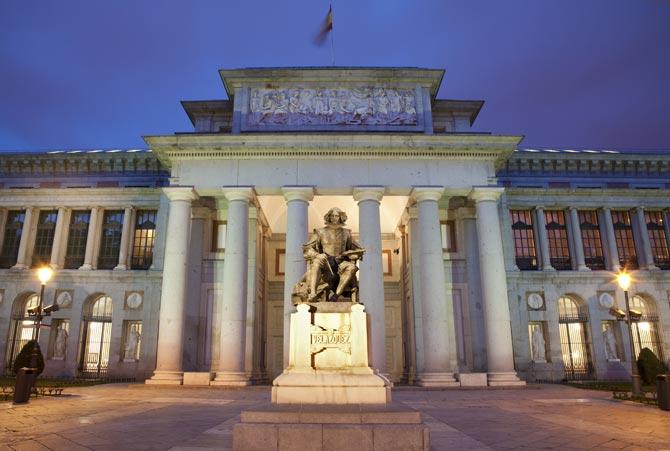
The Museo Nacional Del Prado in Spain
Museo Nacional Del Prado: Alternatively known as the Museo del Prado, it is the main Spanish national art museum, located in central Madrid, Spain and features one of the world's finest collections of European art, dating from the 12th century to the early 19th century, based on the former Spanish Royal Collection, and unquestionably the best single collection of Spanish art. Established in 1819, El Prado is one of the most visited sites in the world with over 2.8 million visitors in 2012 and is the largest in Spain. It is considered one the greatest museums of art in the world. The numerous works by Francisco de Goya, the single most extensively represented artist, as well as by Diego Velázquez, El Greco, Titian, Peter Paul Rubens and Hieronymus Bosch are some of the highlights of the collection. The collection currently comprises around 7,600 paintings, 1,000 sculptures, 4,800 prints and 8,200 drawings among others out of which 1,300 works were displayed in the main buildings by 2012, while around 3,100 works are on temporary loan to various museums and official institutions. The Museo del Prado authorities are planning a 16% extension in the nearby Salón de Reinos, to be opened in 2019.
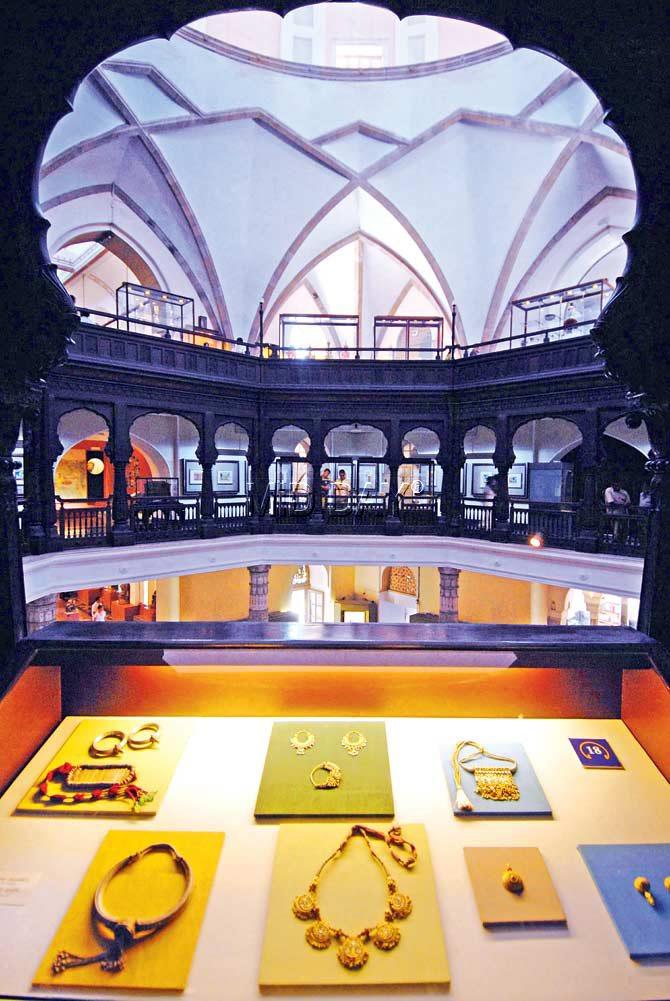
Exhibits at Chhatrapati Shivaji Maharaj Vastu Sangrahalaya. Pic/Sameer Markande
Chhatrapati Shivaji Maharaj Vastu Sangrahalaya: Formerly known as Prince of Wales Museum of Western India it is Mumbai's main museum and was founded on 10 January 1922 by prominent citizens with the aid of the government to commemorate the visit of the then prince of Wales. Located in the heart of South Mumbai near the Gateway of India, the museum was renamed in the 1990s or early 2000s after Shivaji, the founder of Maratha Empire. The CSMVS houses approximately 50,000 exhibits of ancient Indian history as well as objects from foreign lands, categorized primarily into three sections: Art, Archaeology and Natural History. Indus Valley Civilization artefacts, and other relics from ancient India from the time of the Guptas, Mauryas, Chalukyas and Rashtrakuta are also housed there. In its recent modernization programme (2008), the Museum created 30,000 sq ft (2,800 m2) space for installation of five new galleries, a conservation studio, a visiting exhibition gallery and a seminar room, in the East Wing of the Museum and it also houses a library. a host of activities have been planned at Chhatrapati Shivaji Maharaj Vastu Sangrahalaya. The events have been designed keeping this year's theme, Museums and Cultural Landscape in mind. Start the day with a guided walk through Fort and listen to stories about its history. (Read more)
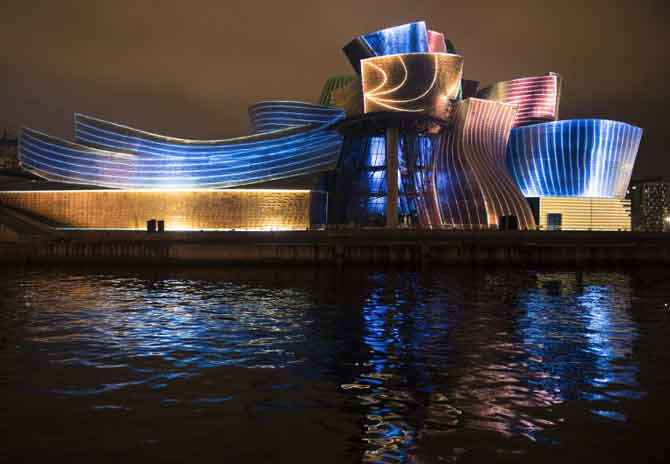
Guggenheim-Bilbao
The Guggenheim Bilbao located in Basque Country, Spain, and was constructed in 1997 by Frank Gehry.
It overlooks the Nervión River, and it was created from glass, limestone, and Titanium. Meant to look like a bunch of flowers growing by the river. It is also known to have started what is poppularly known as the “Bilbao Effect”, an effect that is now used to describe the phenomenon of comissioning 'starchitects' to design structures in the city.
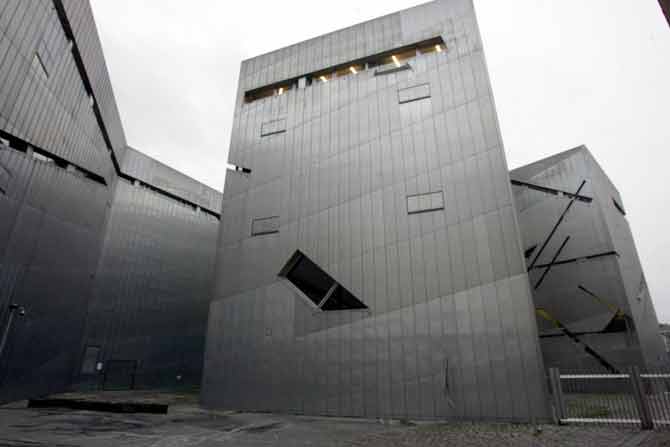
Jewish Museum in Berlin
The Jewish Museum in Berlin located at Lindenstrasse in Berlin was constructed in 2001 by Daniel Libeskind. The new building (pictured above) is meant to look like a zigzag pattern and feature sharp angles, dark and narrow paths, interior walls of bare concrete, as well as a titanium-zinc facade with minimal openings. It is meant to document the history of the Jews of Germany and commemorate the Holocaust

Louvre Abu Dhabi
Louvre-Abu Dhabi is located in Abu Dhabi and is a dome shaped structure overlooking the Arabian Gulf. Inspired by Al Ain, which is an oasis emirate, and Islamic and Arabic architecture, this structure was designed by Pritzker Prize winner Jean Nouvel
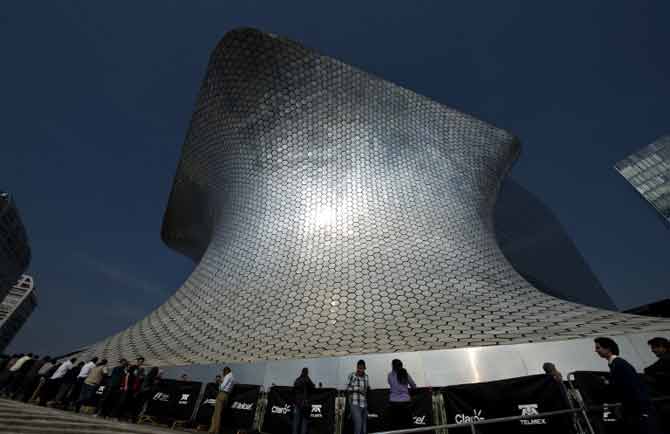
Museo-Soumaya
The Museo Soumaya, located in Mexico City, Mexico, was constructed in 1994. It was funded by
Carlos Slim and cost 47 million Euros to build. The avant-garde structure with a reflective outer wall brings to mind the sculptures of Auguste Rodin is constructed with an exterior wall of 16,000 polygonal Aluminium panels. It houses various types of art pieces from Europe and Mexico.

Museum of Islamic Art
The Museum of Islamic Art is located in Doha, Qatar and was constructed by I.M.Pei in 2008. Inspired by the mosque of Ibn Tulun in Cairo, Egypt and Islamic architecture, the museum overlooks the the Arabian Gulf, is composed of a 5-floor building that is linked to an education center by a vast courtyard.

Niteroi Contemporary Art Museum
The Niteroi Contemporary Art Museum, located in Niteroi, Brazil was built in the year 1996. A result of the collaboration between prominent architect Oscar Niemeyerand structural engineer Bruno Contarini, the museum was based on the futuristic design resembling an alien spaces ship. The Museum is encircled by a reflecting pool and has a very striking red ramp
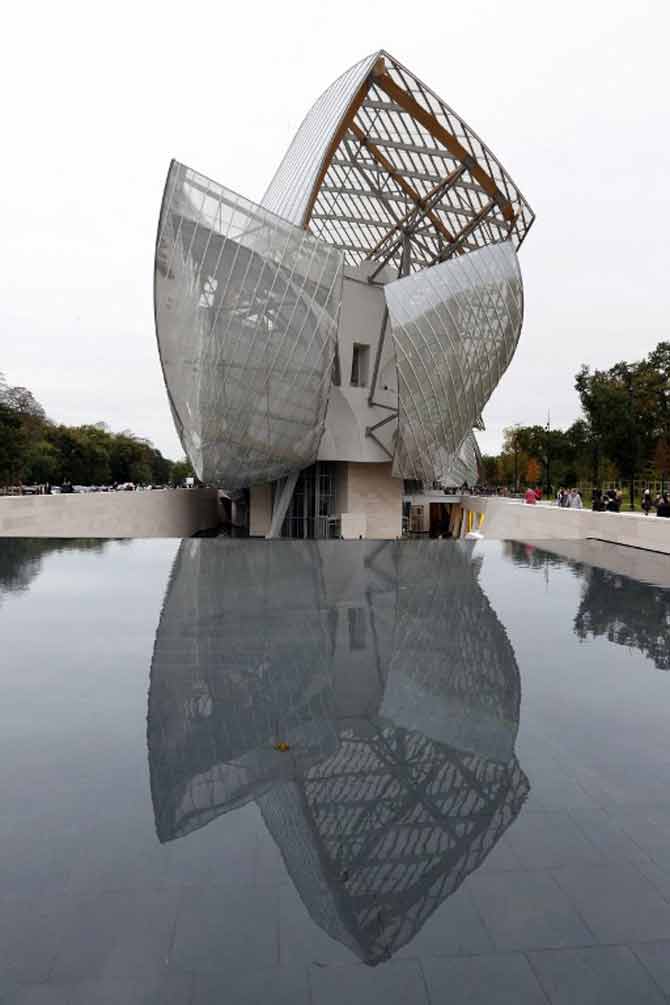
The Louis Vuitton Foundation
The Louis Vuitton Foundation is located in Paris, France and was constructed by Frank Gehry in 2014.
The 143 dollar cultural center is not only a museum but is also a cultural centre that enourages the growth of contemporary art. The musum was designed so it looked as if it were floating against gravity.
Catch up on all the latest Crime, National, International and Hatke news here. Also download the new mid-day Android and iOS apps to get latest updates
 Subscribe today by clicking the link and stay updated with the latest news!" Click here!
Subscribe today by clicking the link and stay updated with the latest news!" Click here!









